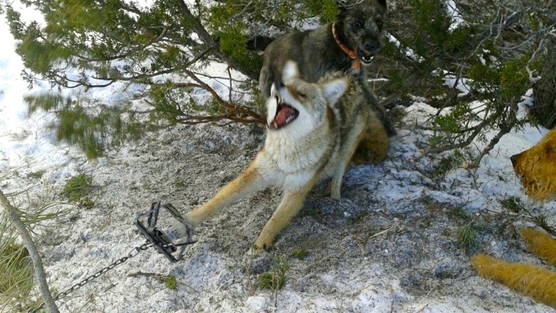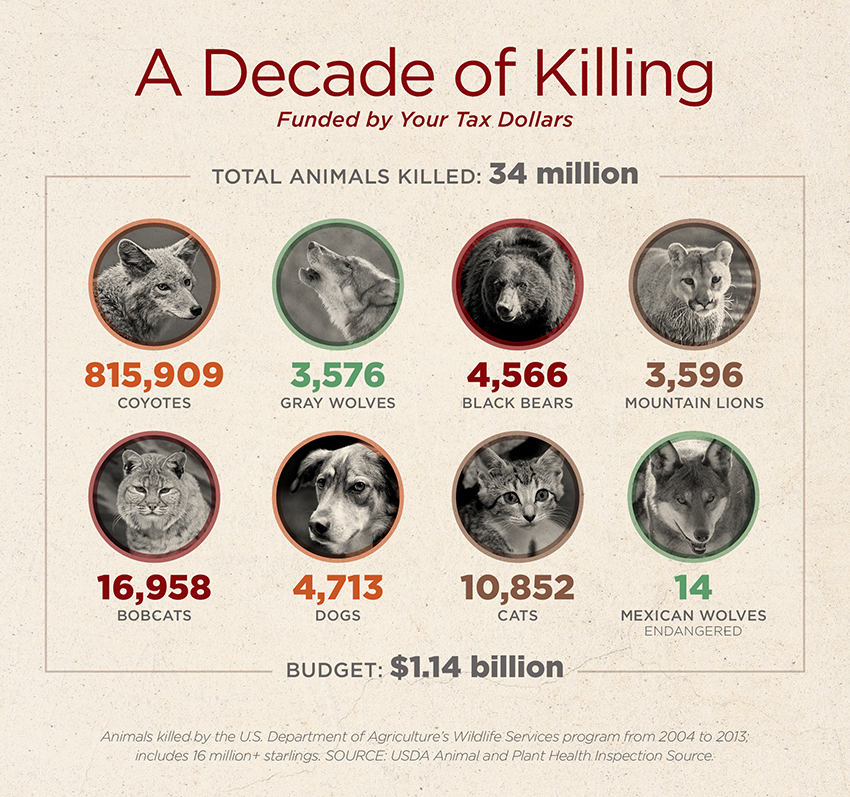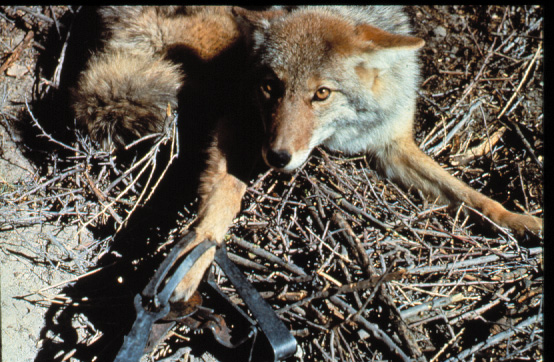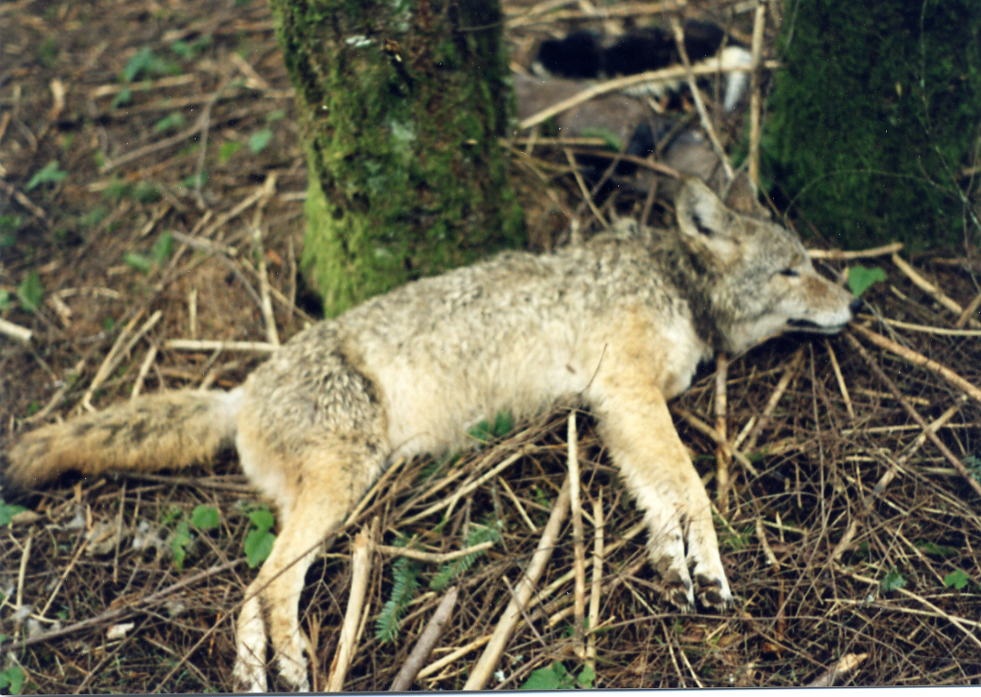After a Century, ‘Landmark Settlement’ Puts Brakes on Federal Government’s ‘Rogue’ Wildlife-Killing Program

(EnviroNews Nature) — Missoula, Montana — Well, it only took a century, but it has happened at last: Something finally put the brakes on Wildlife Services (WS), the U.S. Department of Agriculture’s (USDA) “secretive,” “rogue,” “cruel” wildlife-killing agency — and that “something” is the environmental non-profit organization WildEarth Guardians, via a “landmark settlement” finalized October 6, 2016 — an agreement that changes the rules across the board and puts a stop to WS’ critter-killing endeavors on over six million acres of public land — at least for now.
WS is an agency that doesn’t maintain a Twitter account to inform the public of its daily activities — and an agency that most Americas have never even heard of. Yet, it has been killing millions of wild animals, especially large predators like coyotes, wolves and bears, in the backyards of Americans for over 120 years now — all with taxpayer dollars of course. WS is not to be confused with the U.S. Fish and Wildlife Service (USFWS) or local state wildlife management offices. WS has a mission and history quite its own — and that history could fill rivers with the spilt blood of America’s iconic predators. The agency prefers to operate in the dark and has blocked reporters, and even U.S. lawmakers, from examining its activities at every turn.
The settlement was reached after years of legal struggle, and in the wake of several key federal court verdicts, wherein judges sided with WildEarth Guardians and other environmental groups, ruling against WS, saying the agency had failed to deliver adequate environmental assessments (EA) in several pivotal cases involving wolves and other endangered predators — and that’s what this lengthy legal saga is really all about: the environmental impact reports (or lack thereof).
Bethany Cotton, Wildlife Program Director at WildEarth Guardians, told EnviroNews Nature the agreement accomplishes several sinificant things. She said the settlement was hashed out without help from the court, but was then “filed with the court so the court has jurisdiction to enforce it” — and on October 6 the court approved.
“This agreement means Wildlife Services can no longer rely on disproven ‘science’ to justify its cruel and ecologically unsound killing practices,” Cotton continued in a press release. “We call on the program to use this opportunity to accept the clear science demonstrating that lethal control of native wildlife is ineffective and often counterproductive, and to adopt a coexistence mandate.”
“Our settlement ends killing on six million acres of our public lands in Nevada,” said Sarah McMillan, Senior Attorney for WildEarth Guardians. “The public has a right to be informed of and weigh in on the use of taxpayer dollars to kill native wildlife, and the program has a responsibility to ensure ethical and scientific standards are met by federal employees.”
All in all, the deal seams to be one WildEarth Guardians and other activists and conservation organizations are excited about. “We did not make any major concessions,” Cotton concluded to EnviroNews in an email.
Wildlife Services has yet to return EnviroNews‘ calls for comment.
WILDEARTH GUARDIANS vs WILDLIFE SERVICES: AN ENVIRONMENTAL LEGAL BATTLE OF EPIC PROPORTIONS
WS didn’t just roll over and give up on the status quo because WildEarth Guardians asked it to. The massive ground the agency gave up came after a relentless onslaught of precedent-setting legal actions over the past several years, brought by WildEarth Guardians, in concert with a coalition of other NGO environmental and conservation groups. Some of the NGOs that fought alongside WildEarth Guardians in those suits include the Center for Biological Diversity, Predator Defense, Western Watersheds Project, Friends of the Clearwater, Cascadia Wildlands, Advocates for the West, Western Environmental Law Center (WELC) and Project Coyote.
WildEarth Guardians, in tandem with these and other organizations, has been arguing relentlessly in court that WS has been using “outdated” and mostly “disproven” scientific information to justify its activities — and the courts have been agreeing with the conservation groups as of late. For example, in one of the “pivotal cases” mentioned above, WildEarth Guardians sued WS for failing to analyze the environmental impacts of its killing activities in Nevada, while WS defended itself in the case by arguing a sweeping 22-year-old analysis was adequate to identify potential environmental impacts. In March of 2013, the U.S. District Court – District of Nevada, ruled against WildEarth Guardians and granted WS’ motion to dismiss. But WildEarth Guardians appealed to the Ninth Circuit Court of Appeals, and that court “resoundingly rejected” WS’ argument and sent the case back to the District Court. At that point, WS and WildEarth Guardians entered into the settlement talks that ultimately resulted in the October 6 agreement.
In another recent lawsuit in federal court in the state of Washington, the court ruled that WS did not thoroughly examine the impact its activities were having on wolves, while also failing to outline overarching ecological concerns, including the positive effects wolves have on the ecosystem at large. Another precedent-setting element of the Washington decision came when the court also found that animals don’t stop at state borders and neither should the science, ruling WS’ impact analysis can’t just come to an end at the state line.
“Animals don’t respect state borders. So, in some ways, WS is between a rock and a hard place right now,” Cotton told EnviroNews.

Two other cases, also covered by EnviroNews, are still pending, wherein WildEarth Guardians and aforementioned coalition members are suing WS for similar shortcomings concerning the killing of wolves in both Oregon and Idaho.
WildEarth Guardians and the Center for Biological Diversity have been a dynamic duo when it comes to suing various government agencies for both failing to protect endangered species, and in the cases concerning WS, actually killing millions of animals, including endangered predators, illegitimately. These two groups are also in and of themselves, responsible for the USFWS moving forward on Endangered Species Act (ESA) protection on over 800 imperiled wildlife species, following another monumental ten-year legal war. The Center for Biological Diversity boasts a “93 percent success rate” on cases against the federal government involving imperiled species. With the October 6 settlement with WS, WildEarth Guardians gains yet another notch on its belt in its ongoing mission to make the government act intelligently and compassionately toward the country’s native wildlife.
WHAT DID ADVOCATES GAIN WITH THE SETTLEMENT?
1. Wildlife Services Must Stop Relying on ‘Outdated,’ ‘Disproven’ Information
An environmental impact statement (EIS) is a document required by federal law under the National Environmental Policy Act (NEPA) for approval of specific actions that could “significantly [affect] the quality of the human environment.” Many states also require reports similar to an EIS if an entity or agency wishes to carry out activities that could pose a threat to the environment within the state’s border.
WS has been utilizing a type of broad, agency-wide environmental impact statement (EIS) known as a PEIS, or programmatic environmental impact statement, to justify its animal slaughters across the board. The PEIS has been widely chastised for being crafted around data from the 1970s and 80s — and for even citing studies as antiquated as 80-years-old. By way of this broad-brush analysis, WS has essentially been giving itself permission to eradicate any animal it wants — whenever it wants — be it endangered or not. The PEIS in question originates from 1994, and has been referenced and used repeatedly by WS as a practical blanket document to create grounds for its endless animal assassinations — but no more will that be the case. The October 6 settlement kicks the old-fashioned document to the curb.
In addition to not being able to use the 1994 PEIS for future approvals, as part of the settlement, WS must also redo all its state-based EAs where the 1994 analysis was referenced, though there is no specified timeframe for it to do this. Cotton told EnviroNews there are “ways for [WildEarth Guardians] to deal with” the situation should WS drag its feet on this part of the deal.
To be clear, the settlement does not force WS to stop all its killing activities across the country, though if it continues to slay wildlife in places where the 1994 PEIS has been used, without submitting a new EA, the agency could certainly be opening itself up to further legal action.
EnviroNews Nature asked Cotton if Americans could expect to see WS stop killing animals in places where its EAs now have to be redone. “It’s not required. I certainly think they should, but it’s not required by the settlement – except in Nevada,” said Cotton.
2. A Moratorium on Wildlife Killing on Public Lands in Nevada
When the Ninth Circuit Court of Appeals said WS did indeed fail to prove the validity of its activities in Nevada, this, to a degree, gave birth to the settlement. As such, part of the agreement puts a moratorium on WS’ killing activities for all practical purposes, on over six million acres of public lands, prohibiting the agency’s mammalian murders on all wilderness study areas and designated wilderness areas in the Silver State.
‘WILDLIFE DISSERVICES’ — A ‘SECRETIVE,’ ‘ROGUE’ AGENCY WITH A VERY BLOODY PAST
The words “secretive,” and “rogue,” used in the first paragraph and header of this article, weren’t assigned to WS by EnviroNews — not at all. Those are the words chosen by numerous top-tier news organizations like NatGeo, The Sacramento Bee, Harper’s Magazine and many others to tag the agency — an agency that by its own admission, killed 3.2 million wild animals in the U.S. last year alone — of which 1.6 million were native species, including many endangered predators like Mexican gray wolves and grizzly bears.
The Humane Society refers to WS as “Wildlife Disservices,” and reminds its followers by way of charts and info-graphics that the “total number of animals killed” by WS over a decade was “34 million,” and that those killings were “funded by your tax dollars.”

Tom Knudson, a two-time Pulitzer Prize winning reporter who now writes for RevealNews.org, authored a 12-article set on WS for the Sacramento Bee. Knudson recently summed up the agency this way:
The odds are good you have never heard of a small federal agency that goes by the curious name of Wildlife Services.
There’s a reason for that. The agency – which specializes in killing wild animals that threaten agriculture, especially predators – prefers to operate in the shadows.
That is a lesson I learned repeatedly while reporting a series of articles about Wildlife Services for The Sacramento Bee in 2012. Even basic information about where species were killed – and with what methods – was closely guarded and accessible only via the Freedom of Information Act. When I asked to observe Wildlife Services’ lethal predator control in action on public land in Nevada, the answer was unequivocal: No.
Christopher Ketcham, a fellow at MIT’s Knight Science Journalism Program, authored a bombshell article in Harper’s Magazine earlier this year titled, “The Rogue Agency: A USDA Program That Tortures Dogs and Kills Endangered Species.” In an interview with NatGeo’s Wildlife Watch, Ketcham expressed his own struggles with WS — and how the agency did its best to stymie his reporting at every juncture:
Congressman Peter DeFazio would tell you that it’s unaccountable and secretive. He has tried to get information about its finances and its operations, and he couldn’t get it.
Wildlife Services seems to be freely violating their directives, especially when it comes to the EPA’s rules on the use of pesticides. They appear not to be operating with any kind of science-based system to justify their lethal control against wildlife. And when their own trappers are found to be committing what appear to be cruel and inhumane acts against wildlife, nothing happens to those trappers.
These are not people who are forthcoming about information. I spent a year working on this story, and contacted Wildlife Services multiple times to ask to go out in the field with a trapper to observe their lethal control operations. They never granted me that request, claiming it would endanger me. Then I sent them a list of 35 questions, almost none of which were directly answered. If they’re not going to a respond to an informational request from a senior congressman in the House, do you think they’re going to answer a reporter?
So just why does WS perpetrate such an animal bloodbath on U.S. soil using your tax dollars? Well, according to the agency’s website, its missions is to “provide federal leadership and expertise to resolve wildlife conflicts to allow people and wildlife to coexist.” But wildlife and environmental groups paint a different picture of WS entirely, claiming that all the killing is “at the behest of the livestock and agricultural industries.” In other words, to appease the complaints and requests of farmers and ranchers who are being bothered by native predators and myriad other creatures, both native and non-native.

But it’s not just the fact that WS kills wild animals that has so many people up in arms — it’s also the “indiscriminate” methods the agency uses that aggravate animal rights activists to no end. Predators are chased, sometimes over long distances, and shot from helicopters in terrifying fashion. Cyanid pellets are injected into the mouths of animals, sometimes leading to excruciating deaths. Litters of coyote pups are gassed in their dens, creating fallout for other species and the environment, while in other situations, animals at times remain hung up in unchecked traps for days before expiring.


Wildlife Services does have a few other duties outside of just mercilessly slaughtering millions of wild creatures each and every year. The agency does for example, combat certain invasive species wreaking havoc on natural ecosystems, and according to Cotton, WildEarth Guardians has no problem with some of the things WS does. “It really is the killing of native species that are keystone animals — that’s what we take issue with. If they were in the Everglades eradicating invasive snakes that are just destroying native snake species, that’s one thing – those are serious ecological issues.”
With the new settlement in place, Americans will now have to watch and see if Wildlife Services, a century-old agency riddled with entrenched interests and controversy, will now change its behavior toward America’s wildlife and iconic predators — or, if it will continue its bloody business as usual and have to keep defending itself in court against WildEarth Guardians and the other tenacious environmental groups that have joined the legal fight.
READ OTHER HARD HITTING ENVIRONEWS REPORTS ON WILDLIFE SERVICES IN THE STORIES BELOW
‘Secret’ Federal Agency Admits Killing 3.2 Million Wild Animals in U.S. Last Year Alone
(EnviroNews DC News Bureau) – Washington D.C. – The United States Department of Agriculture’s (USDA) Wildlife Services (WS) admitted in its annual Program Data Report to having killed at least 3.2 million wild animals in 2015 alone – many of which were large predators. 1,681,283 of that total…
Five Environmental Groups Sue USDA Over Idaho Wolf-Killing Program
(EnviroNews Idaho) – Boise, Idaho – On June 1, 2016, five prominent environmental organizations filed a lawsuit in federal district court against the United States Department of Agriculture’s (USDA) Wildlife Services for killing over 650 wolves in the state of Idaho over the past decade. Wildlife Services is…
Federal Government Sued For Killing Wolves in Oregon
(EnviroNews Oregon) – Five environmental groups filed a lawsuit on February 3, 2016, in U.S. District Court against the federal agency Wildlife Services, over what they say is the illegitimate killing of wolves in the state of Oregon. WildEarth Guardians, Center for Biological Diversity, Predator Defense, and Project…
POLL CLOSED: Should USDA’s Secretive Wildlife Killing Program Be Abolished? Yes/No – VIEW RESULTS
(EnviroNews Polls) – 3.2 million animals. That is the amount of critters and creatures brutally eradicated by Wildlife Services (WS) in America last year alone, by way of traps, snares, bullets and poisons – all with your tax dollars of course (at least if you are a U.S….
Poll Closed: Should U.S. Government Maintain a Wolf-Killing Program? Yes or No? – View Results
(EnviroNews Polls) – In December of 2015, several environmental groups, spearheaded by WildEarth Guardians, won a pivotal lawsuit against Wildlife Services, a U.S. Department of Agriculture (USDA) agency, for its wolf-killing program in Washington State. On February 3, 2016, WildEarth Guardians, in concert with four other groups, filed…
FILM AND ARTICLE CREDITS
- Emerson Urry - Journalist, Author


![Leading the Charge for America’s Wild Horses on Capitol Hill: NBA/NFL Celeb. Bonnie-Jill Laflin: ‘[Politics] won’t stop us from fighting’](https://cf-images.us-east-1.prod.boltdns.net/v1/static/1927032138001/f46b2158-cead-47f0-ab44-4b027059411a/4e4afcf2-937d-4a9d-acba-1b82e2efd4c6/160x90/match/image.jpg)


